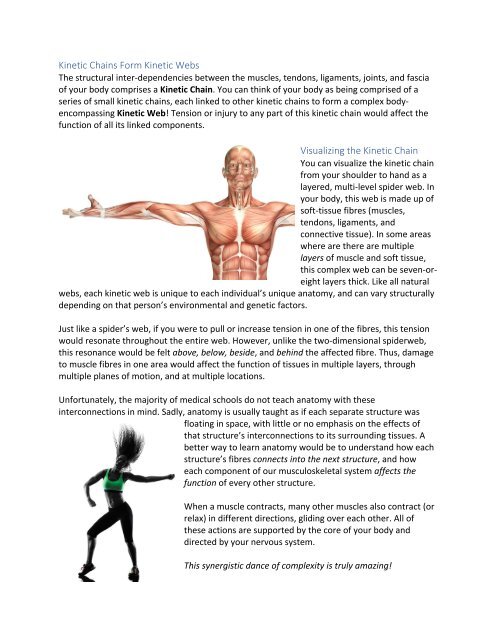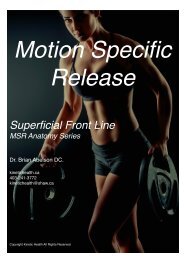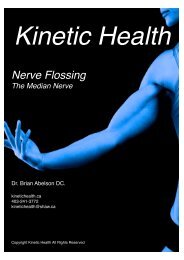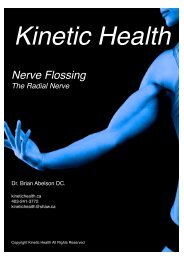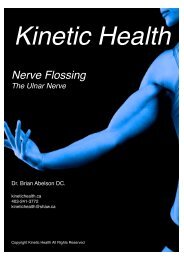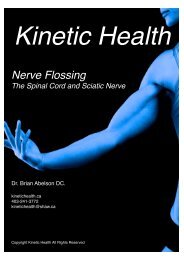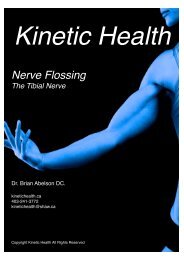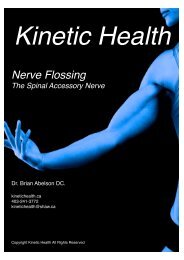Rotator Cuff Magazine
You also want an ePaper? Increase the reach of your titles
YUMPU automatically turns print PDFs into web optimized ePapers that Google loves.
Kinetic Chains Form Kinetic Webs<br />
The structural inter-dependencies between the muscles, tendons, ligaments, joints, and fascia<br />
of your body comprises a Kinetic Chain. You can think of your body as being comprised of a<br />
series of small kinetic chains, each linked to other kinetic chains to form a complex bodyencompassing<br />
Kinetic Web! Tension or injury to any part of this kinetic chain would affect the<br />
function of all its linked components.<br />
Visualizing the Kinetic Chain<br />
You can visualize the kinetic chain<br />
from your shoulder to hand as a<br />
layered, multi-level spider web. In<br />
your body, this web is made up of<br />
soft-tissue fibres (muscles,<br />
tendons, ligaments, and<br />
connective tissue). In some areas<br />
where are there are multiple<br />
layers of muscle and soft tissue,<br />
this complex web can be seven-oreight<br />
layers thick. Like all natural<br />
webs, each kinetic web is unique to each individual’s unique anatomy, and can vary structurally<br />
depending on that person’s environmental and genetic factors.<br />
Just like a spider’s web, if you were to pull or increase tension in one of the fibres, this tension<br />
would resonate throughout the entire web. However, unlike the two-dimensional spiderweb,<br />
this resonance would be felt above, below, beside, and behind the affected fibre. Thus, damage<br />
to muscle fibres in one area would affect the function of tissues in multiple layers, through<br />
multiple planes of motion, and at multiple locations.<br />
Unfortunately, the majority of medical schools do not teach anatomy with these<br />
interconnections in mind. Sadly, anatomy is usually taught as if each separate structure was<br />
floating in space, with little or no emphasis on the effects of<br />
that structure’s interconnections to its surrounding tissues. A<br />
better way to learn anatomy would be to understand how each<br />
structure’s fibres connects into the next structure, and how<br />
each component of our musculoskeletal system affects the<br />
function of every other structure.<br />
When a muscle contracts, many other muscles also contract (or<br />
relax) in different directions, gliding over each other. All of<br />
these actions are supported by the core of your body and<br />
directed by your nervous system.<br />
This synergistic dance of complexity is truly amazing!


